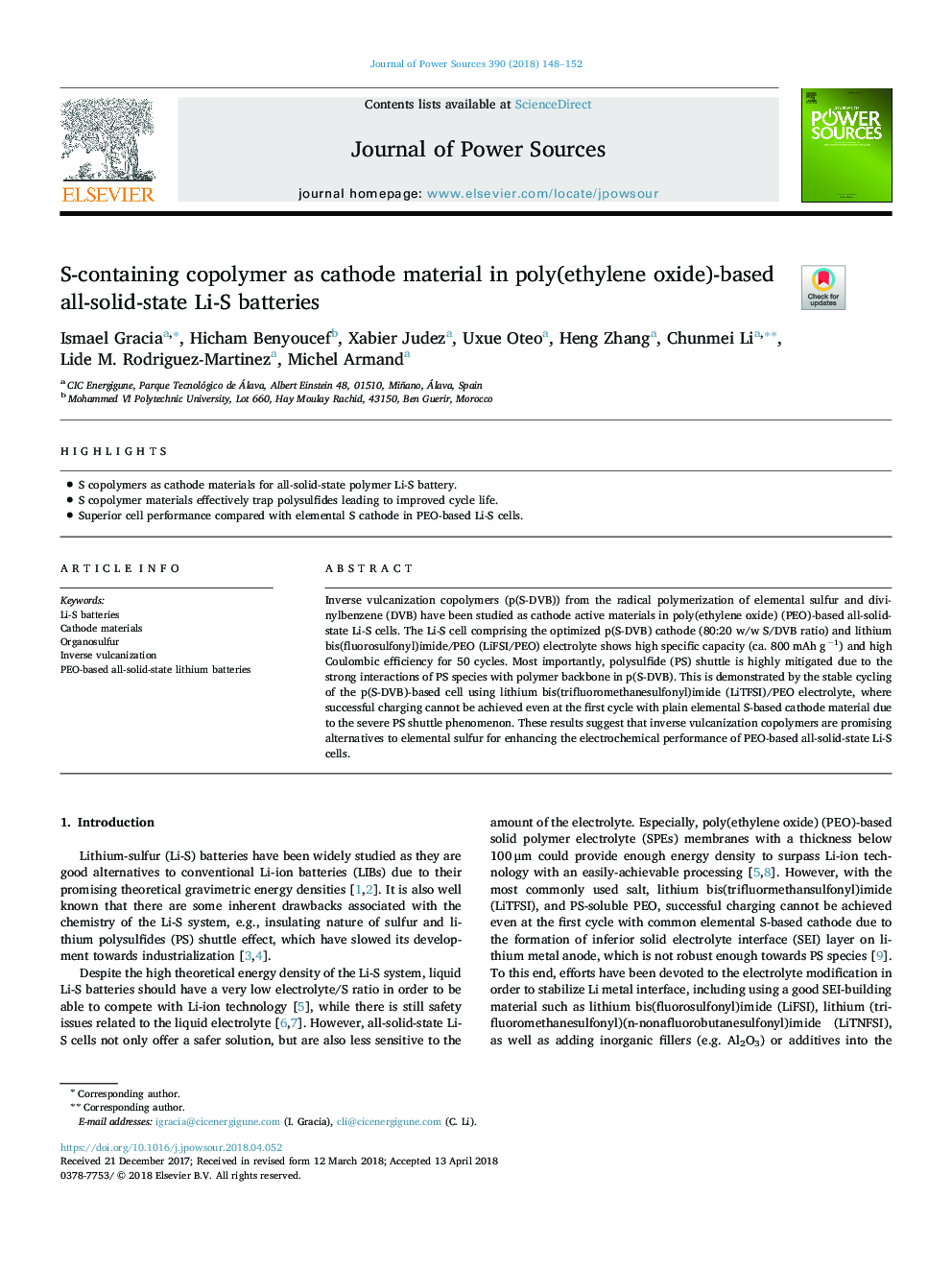| Article ID | Journal | Published Year | Pages | File Type |
|---|---|---|---|---|
| 7725103 | Journal of Power Sources | 2018 | 5 Pages |
Abstract
Inverse vulcanization copolymers (p(S-DVB)) from the radical polymerization of elemental sulfur and divinylbenzene (DVB) have been studied as cathode active materials in poly(ethylene oxide) (PEO)-based all-solid-state Li-S cells. The Li-S cell comprising the optimized p(S-DVB) cathode (80:20 w/w S/DVB ratio) and lithium bis(fluorosulfonyl)imide/PEO (LiFSI/PEO) electrolyte shows high specific capacity (ca. 800â¯mAh gâ1) and high Coulombic efficiency for 50 cycles. Most importantly, polysulfide (PS) shuttle is highly mitigated due to the strong interactions of PS species with polymer backbone in p(S-DVB). This is demonstrated by the stable cycling of the p(S-DVB)-based cell using lithium bis(trifluoromethanesulfonyl)imide (LiTFSI)/PEO electrolyte, where successful charging cannot be achieved even at the first cycle with plain elemental S-based cathode material due to the severe PS shuttle phenomenon. These results suggest that inverse vulcanization copolymers are promising alternatives to elemental sulfur for enhancing the electrochemical performance of PEO-based all-solid-state Li-S cells.
Related Topics
Physical Sciences and Engineering
Chemistry
Electrochemistry
Authors
Ismael Gracia, Hicham Ben Youcef, Xabier Judez, Uxue Oteo, Heng Zhang, Chunmei Li, Lide M. Rodriguez-Martinez, Michel Armand,
